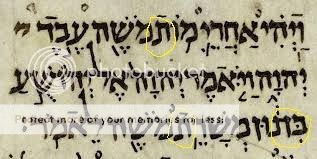Katzpur
Not your average Mormon
I agree 100%The fact that a "godly remnant" of individuals existed, who were trying to do their best, doesn't constitute the original organization as the original, historical εκκλεσια.
Welcome to Religious Forums, a friendly forum to discuss all religions in a friendly surrounding.
Your voice is missing! You will need to register to get access to the following site features:We hope to see you as a part of our community soon!
I agree 100%The fact that a "godly remnant" of individuals existed, who were trying to do their best, doesn't constitute the original organization as the original, historical εκκλεσια.
Well, if it did, it could theoretically have happened at any time after Christ's death. Jehovah's Witnesses (if I'm not mistaken) and Mormons both hold that it took place within the first couple of centuries after Jesus' death and resurrection. The Protestant Reformers obviously believed the Church they set about to "reform" had changed enough since Christ established it that it was no longer what it was back in the first century. The OP of the 10-year-old thread that prompted me to start this one claimed that as long as there were true Christians ("a godly remnant"), that alone proved that there never was an apostasy.Two questions: when exactly did the early church of the apostles fall into apostasy, and what exactly did they supposedly decide that specifically was apostasy? However, since this is a "same faith debate" thread, I'll not get involved discussing this.
Thanks for your thoughtful response.Well, if it did, it could theoretically have happened at any time after Christ's death. Jehovah's Witnesses (if I'm not mistaken) and Mormons both hold that it took place within the first couple of centuries after Jesus' death and resurrection. The Protestant Reformers obviously believed the Church they set about to "reform" had changed enough since Christ established it that it was no longer what it was back in the first century. The OP of the 10-year-old thread that prompted me to start this one claimed that as long as there were true Christians ("a godly remnant"), that alone proved that there never was an apostasy.
It's my contention that the existence of a "godly remnant" proves nothing of the sort. I suppose that ties directly to your second question as to what exactly an apostasy even is. From my perspective, an apostasy has occurred when the doctrines being taught have been altered and are no longer the doctrines Jesus Christ and His Apostles taught. They may have some basis in scripture but have been largely influenced and modified
by the philosophies of men.

Well, if it did, it could theoretically have happened at any time after Christ's death. Jehovah's Witnesses (if I'm not mistaken) and Mormons both hold that it took place within the first couple of centuries after Jesus' death and resurrection. The Protestant Reformers obviously believed the Church they set about to "reform" had changed enough since Christ established it that it was no longer what it was back in the first century. The OP of the 10-year-old thread that prompted me to start this one claimed that as long as there were true Christians ("a godly remnant"), that alone proved that there never was an apostasy.
It's my contention that the existence of a "godly remnant" proves nothing of the sort. I suppose that ties directly to your second question as to what exactly an apostasy even is. From my perspective, an apostasy has occurred when the doctrines being taught have been altered and are no longer the doctrines Jesus Christ and His Apostles taught. They may have some basis in scripture but have been largely influenced and modified
by the philosophies of men.
I don't think you can have a true Christian Church without true Christians, nor can you have true Christians without a true Church.This thread was started to pick up where a 10-year-old thread currently stands. I wanted to start from scratch in discussing this topic, but will approach the subject from a slightly different perspective. The original OP asked the question, "Did the Christian Church ever fall away completely?" One of the options in this poll was, "No, there has always been a Godly remnant." Personally, I don't see this option as even being relevant. When I first read it ten years ago, my first thought was, "So what if there has always been a godly remnant. What does that prove?" To me, that statement would only be relevant had the question been "Have there always been Christians since Christianity was first established?" So I'm asking now: "Does the existence of a 'godly remnant' prove the Church never fell into apostasy?" Personally, I don't see any real correlation between "a godly remnant" existing and "the true Church" never having fallen into apostasy. If this question doesn't make sense to you, then try answering this one instead: Can there be "true Christians" without a "true Christian Church"? Perhaps we need to begin by explaining what we mean when we use the phrases "a true Christian" and "the true Christian Church."
Yup, it got moved to Same Faith Debates apparently@Katzpur, please you clue me in about this thread. Was it moved to same-faith-debates, and why are there lots of non LDS people in here posting?
